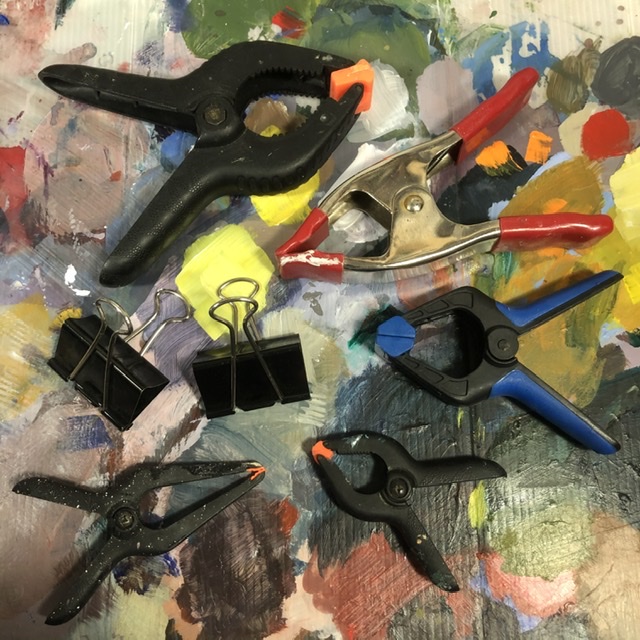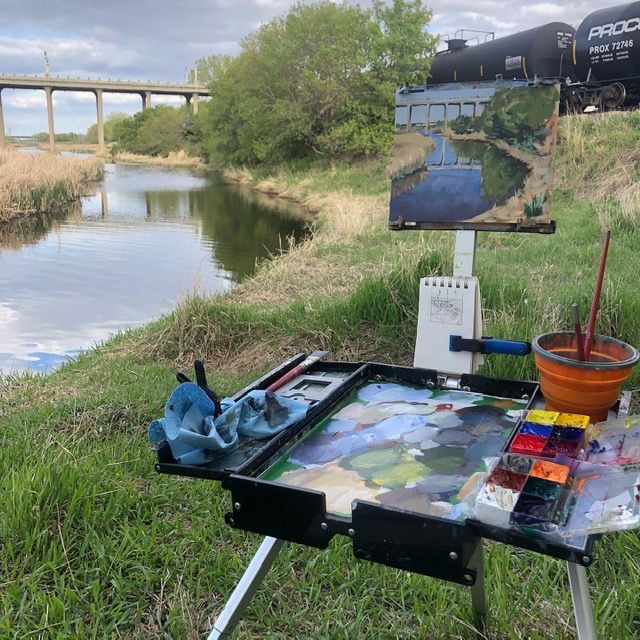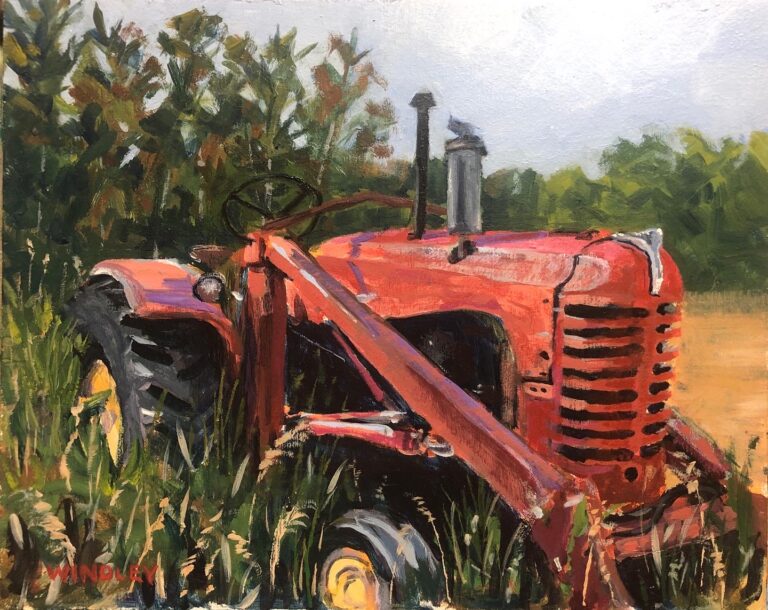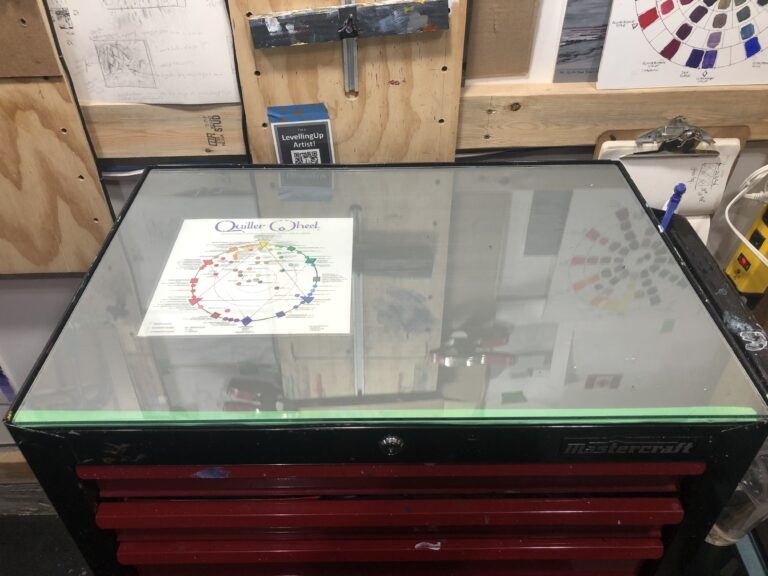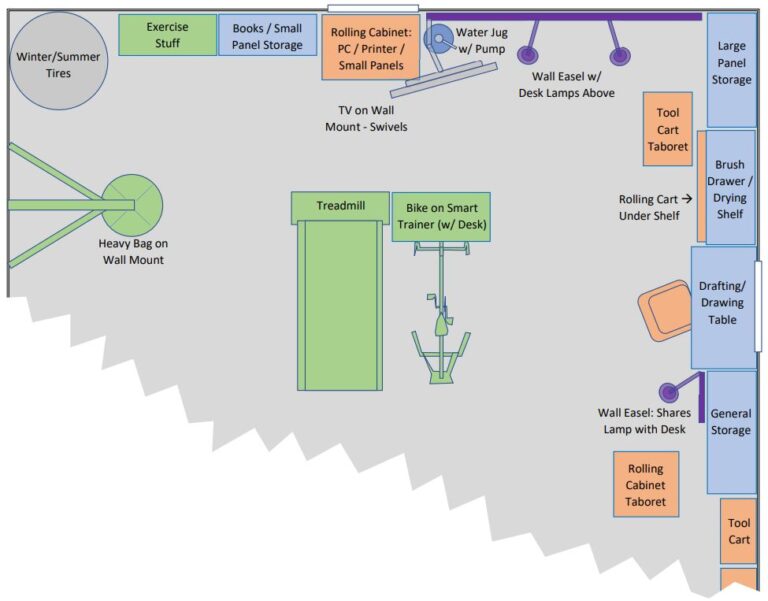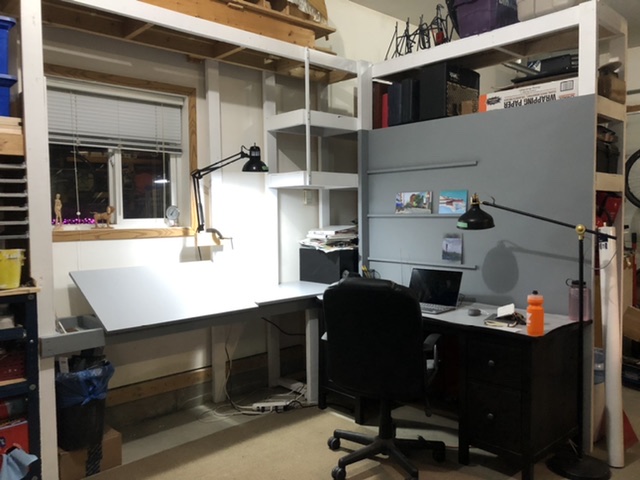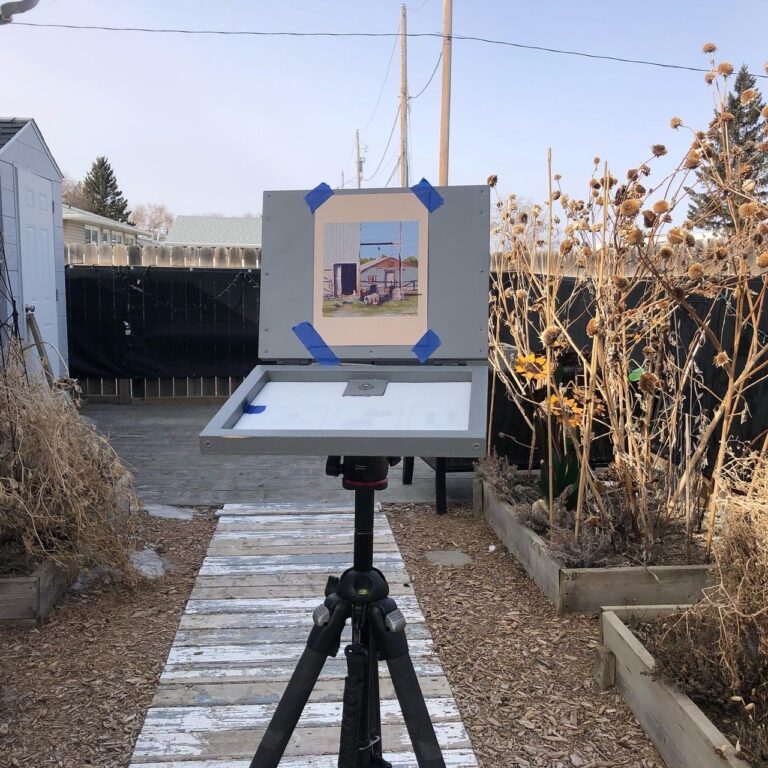Five Art Tools That Are Really Useful (most aren’t actually art tools)
Some items that are really useful in my Art Practice
1. Spring Clamps
If you don’t have any of these, I encourage you to pick a bunch of them up. Once you have them, you will find uses for them all the time.
You can buy plastic or steel spring clamps at places like Lee Valley or your local hardware store. They are often sold in packs with multiple sizes. Although not as good, large binder clips can also be used.
In my art practice, I use them for
- Plein Air Painting
- Attaching value sketch to mast of easel
- Clamping rags to work surface so it doesn’t blow away
- Attaching my solvent bucket to paint box (when painting oils)
- Studio Painting
- Clamping support holders on my wall easels – convenient adjustable solution
- Clipping reference images or studies to wall easel
- Holding small brushes in paint water so tip isn’t resting on bottom
- Holding large books open when doing master copy practice
- Preparation and Support Work
- Clamping cradles to back of panels
- Clamping parts together when building studio gear like drawers or paint boxes
- Several clamped to edge of work table make a backstop to keep panels in place while I apply gesso with a roller.
- And so on…
2. Scale or Ruler Marked with Inches in 10ths
All of my technical drafting equipment from my engineering student days has moved into my art studio equipment. Probably the item I use most is a scale that is marked in inches divided by tenths. For technical drawing, this is practical. Say you were working on a drawing with a scale of 1″ = 100 feet and you needed to make a line to represent 60′; would you want a scale/ruler marked with 1/16ths or 10ths?
This is very useful for marking 1/3rds or doing specific scaling of dimensions from a reference onto a painting surface that is dimensioned in inches. For example, on a 10″ x 8″ the thirds are on 3.33/6.67 and 2.67/5.33. On the 10ths scale/ruler, you just can quickly measure out 3.3 and a 1/3 to get a perfect dimension. On a 1/16th ruler, you will need to calculate that 3.33 is about equal to 3-21/64th and measure out 3-5/16 and about 1/4 of next space to get an accurate measurement.
OK, obviously you don’t need to get to the thousands of an inch on your grid marking, that is silly. Most of the time, you can eyeball your thirds and be just fine. I’m just pointing out how easy it is to get accurate dimensions using the inch(10ths) scale. If you do measure out your grid or sometimes use scale measurements to establish or troubleshoot an issue in a technical drawing, then this may be a useful tool for you.
A tri-sided engineering scale is a bit expensive and a bit hard hard to find. Recently, I spotted a 12″ ruler at Opus with cm on one side and inches in 10ths on the other. It is the Westcott 10ths/Metric 12inch/30cm Beveled Ruler for $6.10. It is transparent and has cm on other side, so it should prove very handy for scaling work as well.
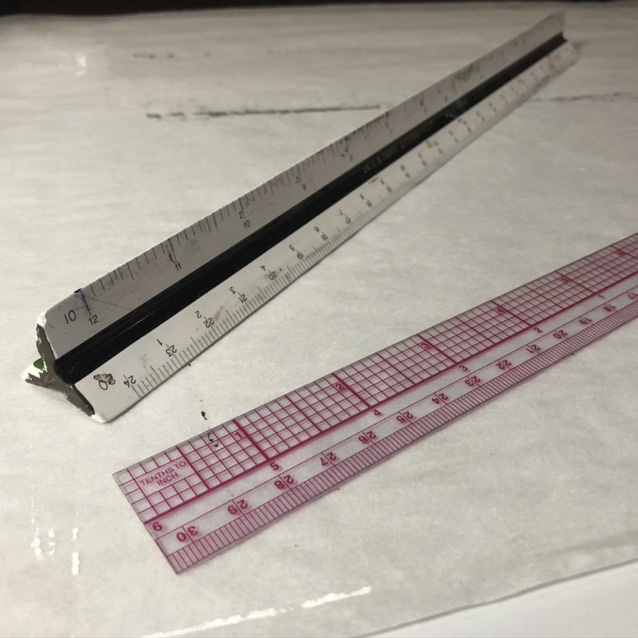
3. Wireless Keyboard and Mouse
In my garage studio, I have a PC and a large TV mounted to a swivel off the wall. On the art side, I use it for displaying reference images, playing music, updating my website, and listening to art podcasts while I work. It’s also used for our bicycle training area to run a smart trainer and play netfix/etc while we burn off pizza calories.
I have two wireless keyboard/mouse setups off usb plug-ins. This allows me to easily move control of the PC between the wall easel, drawing table, work table, and two cycling stations.
If you have a dedicated desktop or laptop station in your studio, consider adding a wireless keyboard/mouse setup to save save some steps and make things a bit more flexible.
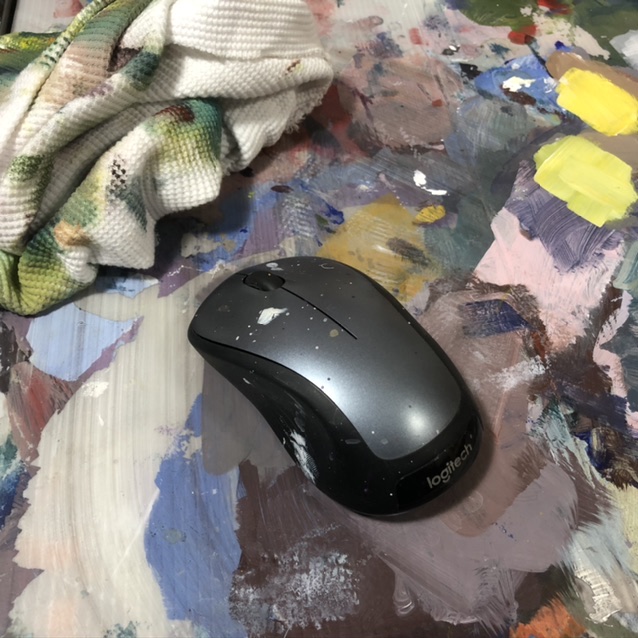
4. Parchment Paper
One spring, I bought two 4×8 sheets of mdf and cut it up into 77 plein air panels of various sizes. I applied 2 or 3 coatings of gesso on each side and, when they were dry, I stacked them and put them on the shelf. The trouble I ran into, was that the panels ended up sticking together and many panels could not be separated without damaging the gesso. These required sanding and several coats of gesso to repair.
OK, that’s not going to happen to me again! My solution was to get some parchment paper from the grocery store and rip it into pieces to match the panels. I store them like this after gesso and then also use them to protect my plein air paintings from a similar fate. Probably overkill, but it doesn’t take much effort or weigh much.
So now I have parchment paper in the studio and find it useful for a number of odd jobs. I lay it down on my gesso shelves to keep them clean and to keep cradled panels from sticking to shelf when I coat the sides. It covers my work table during gesso work. I lay down a fresh sheet my work table anytime I’m working on framing and need a clean surface. I use it for minor carpentry tasks, like keeping glue off stuff while adding cradles on a finished plein air panel.

5. Articulating Desk Lamps w/ 5000K Bulbs
This was my simple solution to lighting in my garage studio. I have a bunch of these simple desk lamps around my studio lighting easel, palette, work table, drafting/drawing table. These can be found at most big stores as well as hardware and office supply stores.
To fit them in place, I made small wood blocks out of scrap 2x4s that have an appropriate size hole drilled in the top for the lamp base to sit in. Then I mounted these blocks above these areas. Power cables are routed to conveniently located power-bars, which means I can turn numerous lights off and on with one switch.
I’ve fitted each with 5000K bulbs to give a ‘daylight’ color. On each lamp, I mark the type of bulb fitted in each using masking tape and black marker. This way, I can easily check without taking the bulb out.
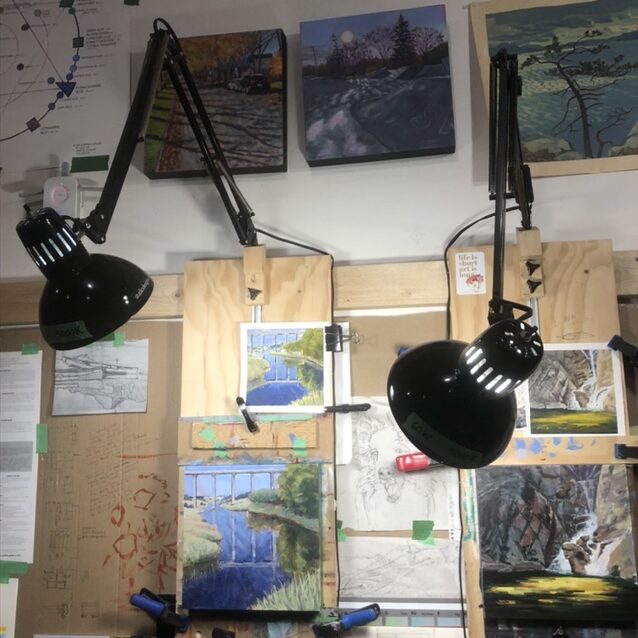
~ JW
